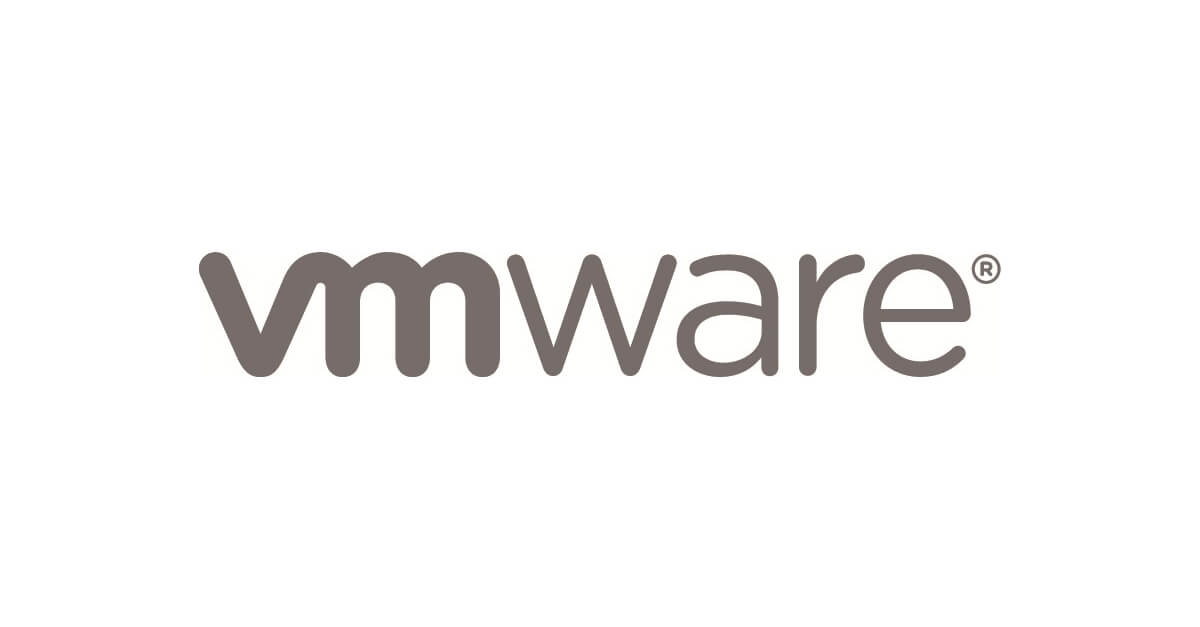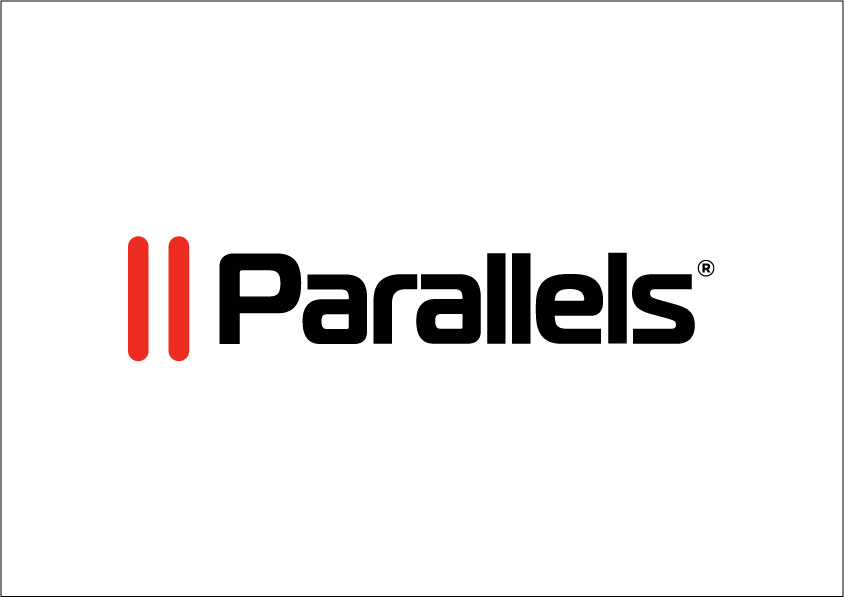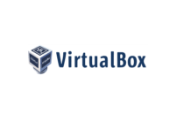VMware Fusion Review
We all know the saying: “You can’t have your cake and eat it too,” but technological advancements are sure to make that proverb obsolete.
We may still have a long way to go before cloning ourselves or traveling to parallel universes, but having a Mac run Windows and Linux applications, no small feat, is just a few clicks away.
In our VMware Fusion review, we’ll present you with one of the best pieces of virtualization software currently available.
- Supports macOS 11
- Very good for gaming
- Free version available
- No reboot required
- Free trial for Pro version
- Creates linked and full clones
- Supports 200+ operating systems
- Automatic snapshots
- Complicated customer support system
- Slow guest-OS boot times
Overview
VMware Fusion was developed and released in 2007 by VMware, Inc., a California-based software company that’s been in business for more than 20 years. Through the use of paravirtualization and hardware virtualization solutions, VMware Fusion allows Intel-based Macs to run virtual machines with guest operating systems.
To a certain extent, the product is actually a compilation of VMware, Inc’s other creations, like the hypervisor for Windows and Linux operating system called VMware Workstation. This just means that the technology has already been thoroughly explored and perfected.
The latest version, VMware Fusion 12, is considered a significant release as it contains a lot of upgrades and improvements and because it’s optimized for macOS 11 Big Sur.
Main Features
Let’s see what some of the main features this software offers are:
Getting Started
One of the primary reasons less tech savvy users might be hesitant to try out virtualization software is that setting it up can seem quite daunting. Thankfully, with VMware Fusion’s Virtual Machine Assistant, you won’t have to do it alone - it will guide you through every step of creating a virtual machine.
Those who already use this software should know that, once you install VMware Fusion 10 or above, all previous versions are automatically deleted.
Support for macOS 11
As mentioned, Fusion 12 works with Apple’s most recent computer operating system, but don’t worry if you haven’t gotten around to trying it out yet. Fusion is also compatible with Big Sur’s predecessor, macOS 10.15 Catalina.
However, any iteration older than that, like macOS 10.14 Mojave, macOS 10.13 High Sierra, or older, won’t be able to launch the hypervisor.
Guest Operating Systems
After you download VMware Fusion and install it, you’ll be able to run pretty much any operating system you can think of – from oldies such as Microsoft Windows XP to many lesser-known Linux distributions.
DirectX and OpenGL 4.1 Access
VMware Fusion lets you access both OpenGL 4.1 and Direct3D, which are APIs for rendering three-dimensional graphics. In other words, you can install Windows games that utilize this software and also boost their performance by allocating up to 8GB of VRAM to them.
USB 3.1 Support
Another valuable upgrade to the latest version of VMware Fusion for Mac computers includes a change to the virtual machine’s eXtensible Host Controller Interface. The USB 3.0 controller has been swapped out for a USB 3.1, thus enabling you to utilize transfer speeds of 10 Gbps.
External GPU
If your job or the games you play require good visuals, you’ll be happy to know that Fusion now supports external GPUs - provided you can afford one. These notoriously expensive add-ons significantly improve the graphics performance on any device.
Boot Camp Partition Launch
Some of you may already have Windows installed on your Mac via Boot Camp. If that’s the case, you might like to know that this top virtual machine software allows you to access a Boot Camp partition by either rebooting and launching Windows directly or by accessing it from inside your primary operating system.
To do the latter, you just have to navigate to “Window” in the menu bar and open the Virtual Machine Library, where you’ll find the partition and a play button next to it. Click on it, and you’ll be ready to go.
KIND Kubernetes
In the long list of recent VMware Fusion updates included in version 12, you’ll discover a small but significant improvement: KIND can now be used for running Kubernetes clusters.
If you’re wondering what sorcery that is, Kubernetes clusters are node sets that run containerized applications. Containerization is a form of OS virtualization where distributed applications (programs running on multiple networked computers) are encapsulated in a single executable software package and run on a shared operating system.
Fusion 12 KIND support is great news for those used to using this technology for local development and continuous integration, or those thinking of trying it.
Snapshots
A VMware Fusion snapshot is a record of the current status of the virtual machine and its guest operating system. It’s a superb tool for testing applications with unknown or even potentially harmful effects.
Snapshots can be taken automatically if you turn on AutoProtect. You can also configure how often the snapshots are taken and how many of them are saved. However, keep in mind that a snapshot can take up the same amount of disk space as a virtual machine.
Clones
The VMware Fusion Mac hypervisor lets you create identical copies of a virtual machine. The clones can be full or linked. A full clone is independent from its parent virtual machine, while a linked one shares virtual disks with the parent virtual machine.
Although full clones offer performance equal to that of the parent virtual machine, linked clones are faster to make and easier on your disk space. Therefore, choosing between the two depends solely on the nature of the task you need them for.
Views
This hypervisor has three available views: VMware Fusion Unity, Single Window, and Full Screen.
To switch to Unity, use the shortcut “Cmd + Shift + U.” You can also click on “Unity” in the “View” menu. Unity mode lets you use virtualized apps like you would any Mac app.
If you’d prefer to see both your macOS and virtual machine desktop simultaneously, select the Single Window view. You can use the same shortcut as above (Cmd + Shift + U) to move from Unity to Single Window view. However, in Full Screen view, you’ll have to either use the shortcut “Cmd + Ctrl + F” or select “Single Window” from the “View” menu.
VMware Fusion in Full Screen will fill your entire display or displays. To enter this mode, you’ll need to use the “Cmd + Ctrl + F” shortcut or select the appropriate command from the “View” menu.
User Experience
The first thing we noticed while testing VMware Fusion is that, compared to its competitors, it takes quite a bit of time to boot a guest system. The standard is usually a few seconds, while Fusion could take up to a minute.
Despite that, VMware is still the best virtual machine software for advanced users. Aside from offering numerous features, it also allows you to configure the integration level between your host and your guest OS.
For example, Parallels used to be the number one choice for gaming virtual machines, but the various improvements in the newest Fusion iteration leveled the playing field.
Nevertheless, one noticeable difference still sets them apart: Games on both virtualizers will stutter initially, but while Parallels will load the game more quickly, Fusion will smooth things out much faster.
Before we move on to the next part of our VMware Fusion review, we should note that Fusion 12 is compatible with most Mac devices launched in 2013 or later.
Related Products
During its two decades in business, VMware has released several noteworthy products, of which its hypervisors are definitely the most popular. In our review, we’ve focused exclusively on VMware’s software for Mac users.
Still, those using Windows and Linux host operating systems should know that they can get the same experience with Workstation.

VMware Workstation is often featured on best-hypervisor lists. To install the software, your computer will have to have a 64-bit x86 processor, a core speed of at least 1.3GHz, and 2GB or more of RAM.
Customer Support
VMware’s library of self-service resources is exceptional, so much so that you’d likely get lost if it weren’t for the search bar. There’s little you won’t find there, from manuals and blogs to forums and compatibility guides.
If the VMware Fusion tools start causing you more trouble than you can deal with on your own, you can contact customer support. However, there are four different types of support you can get.
Complimentary Support
Once you register, you’ll be entitled to up to 30 days of email installation support. You’ll be able to send an unlimited number of support requests between Monday and Friday, from 6 a.m. to 6 p.m. (local time for North America and PST and PDT for Hawaii and Alaska).
Basic Support
Basic Support comes with at least one commercial VMware Fusion license. Depending on your purchase, it lasts one or three years, and it’s available twelve hours per day from Monday to Friday. To receive email or phone assistance, you’ll have to submit an online request.
Per-Incident Support
The third kind of support can be bought for one, three, or five incidents. It’s available for both Fusion Pro and Fusion Player, the two VMware Fusion offerings we’ll soon describe in more detail. If you decide to buy this support package, you’ll have access to phone and email help from a technical engineer.
The prices for VMware Fusion Player Per-Incident Support are:
- $29.99 for one incident
- $79.99 for three incidents
- $121.99 for five incidents
The prices for Fusion Pro Per-Incident Support are:
- $49.99 for one incident
- $129.99 for three incidents
- $199.99 for five incidents
Production Support
Production Support is similar to Basic Support in that one product license gets you one or three years of 24/7 assistance for relatively simple issues (Severity 1). For more complex problems, VMware’s representatives will be at your disposal 10 hours a day, five days a week.
VMWare Fusion Pricing Plans
- Create new VMs
- DirectX 11 and OpenGL 4.1 support
- Assistive device support
- Snapshots
- 200+ supported OSs
- Create new VMs
- DirectX 11 and OpenGL 4.1 support
- Assistive device support
- Snapshots
- 200+ supported OSs
- Encrypted VM
- Virtual network customization
- vSphere/ESXi server supported
- Cloning tools
- Remote vSphere
- Create new VMs
- DirectX 11 and OpenGL 4.1 support
- Assistive device support
- Snapshots
- 200+ supported OSs
- Encrypted VMs
- Virtual network
- vSphere/ESXI server supported
- Cloning tools
- Remote vSphere
- Email and phone support
- Knowledge base articles
Pricing
Now that you know almost everything there is to know about this product, you must be curious about the VMware Fusion pricing scheme. Let’s dive in.
Fusion Player
The difference between Fusion Player and Fusion Pro is the number of features. Player has fewer of them than Pro, so it’s missing the option to create linked and full clones, for example. However, Fusion Player comes free of charge for personal use, which more than makes up for any insufficiencies.

If you’d like to get a commercial license for Fusion Player, you’ll have to set aside $149. Customers who already own Fusion 10 or Fusion 11 need only download the Fusion 12 Player upgrade for $79.
Fusion Pro

The VMware Fusion Pro license for individual and commercial use costs $199, but you can test the product out with a 30-day trial before purchase. Again, there are certain benefits for those that have previous versions of Fusion on their computers.
The price for upgrading from Fusion 10, Fusion 10 Pro, Fusion 11, or Fusion 11 Pro is $99 without a Support and Subscription (SnS) license, while upgrading from Fusion 12 Player to 12 Pro costs $99.
Finally, if you have an active SnS license for Fusion 10 or 11 Pro, you’re eligible for a free upgrade to Fusion 12 Pro.
How Does VMWare Fusion Compare to Other Virtualization Software

- Supports macOS 11
- Very good for gaming
- Free version available
- No reboot required
- Runs Windows and Linux distros

- Easy set up
- Fast guest OS boots
- Automatic Disk Space optimization
- Office 365 Integration
- Seamless file sharing

- Open-source
- Suitable for large corporations
- Simple UI
- Extremely stable
- Runs on Windows, Linux, and Mac
Alternatives
As we near the end of our VMware Fusion review, we’d like to give you a few more options to consider since, as great as Fusion is, it may not be the right choice for everyone. We’ll stick to only the most vital pieces of information.
Parallels
Compared to Fusion, Parallels is easier to set up and can run multiple operating systems faster. On the other hand, it lacks the customization and integration features that Fusion offers.
Additionally, Parallels automatically adds Windows apps to the dock of your Mac. Also, the Parallels starting price is $99.99, while the Fusion Player can be obtained for free.
VirtualBox
In the VMware Fusion vs. VirtualBox comparison, Fusion clearly comes out on top. Both have free versions, but Fusion’s interface is much more polished and intuitive. On the other hand, VirtualBox is an open-source virtualization program, and, as such, it’s quite reliable and frequently improved.
In our opinion, VirtualBox is best suited for large corporations with a team of IT experts.
Conclusion
If we used to have any complaints regarding VMware Fusion’s performance, they immediately went out the window as soon as we installed its latest upgrade. Fusion 12 is reliable, feature-filled, and relatively easy to master, but what we appreciate the most is that one of its licenses is entirely free for personal use.
Judging by the numerous VMware Fusion reviews we’ve read, we aren’t alone in our sentiment.
Frequently Asked Questions
FAQ
Those who opt to get VMware Fusion can get a Fusion Player license for free. It’s available to all users for their non-commercial activities, provided they register on VMware’s website.
As is usually the case, the more you pay, the more you get. You can choose between Fusion Player and Pro. When it comes to the VMware Fusion download options, the former is more affordable. Both are licensed for commercial and non-commercial activities.
Even though it has its limitations, the non-commercial Fusion Player license can be used for free, while the commercial one will cost you $149. In case you only need the Fusion 12 Player upgrade for your software, you’ll have to pay $79.
As for the Pro licenses, you will need $199 for each, while the price for the upgrade is $99. An upside to the Pro pricing plan is that you don’t have to make a decision right away; first, you get a free trial for 30 days.
The Fusion Player license for personal use is free. All you need to do is register on VMware’s website, and you can begin using whichever guest operating system you like.
The difference between the two VMware products, Workstation and Fusion, lies in the operating systems that support them. While the Fusion was made for Mac users, the Workstation is used on computers running Windows and Linux host operating systems.
If you need more detailed information on this topic, read our VMware Fusion review.
Your email address will not be published.
